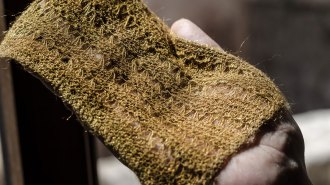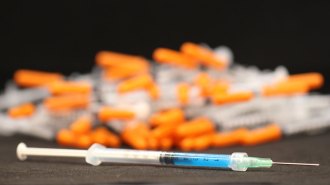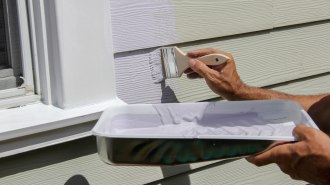Foamy polymers hit goal right on the nose
One undergraduate’s modeling career began in the science lab rather than the art studio. A likeness of his nose demonstrates the value of a new polymer foam for growing cells into tissues.


Researchers at the Massachusetts Institute of Technology have developed a technique for making foams that can be used as scaffolds for regenerating human tissue. Tissues grown on such biodegradable foams may one day serve as replacements for injured or missing body parts.
“Tissues are not just collections of cells,” says W. Mark Saltzman of Cornell University. “They have particular shapes and relationships to one another. A scaffold provides a road map that cells can use in assembling and organizing themselves.”
Today, most manufacturers make foams by blowing gas bubbles into liquids whose viscosity must be precisely controlled. “If it’s not viscous enough, the bubbles grow too fast,” MIT’s Venkatram Prasad Shastri explains. “If it’s too viscous, the bubbles aren’t strong enough to push and grow.”
To make the new foams, the MIT researchers take a thick polymer solution—the more viscous, the better—and mix it with what’s known as a porogen, in this case tiny bits of paraffin or beeswax. They pack the resulting goop into a mold, then pour in an organic solvent. The solvent dissolves the porogen, and the polymer hardens into a network.
The process leaves “a ghost image of the porogen particles” in the polymer, resulting in a light, hard foam, says Shastri. He and his colleagues Robert Langer of MIT and Ivan Martin of the University of Basel in Switzerland describe their technique in the Feb. 29 Proceedings of the National Academy of Sciences.
It’s a useful variation of an existing method known as salt leaching, says Peter X. Ma of the University of Michigan in Ann Arbor. In that technique for making polymer foams, salt crystals serve as the porogen and water washes it away.
With the new technique, the researchers can use water-soluble polymers, such as poly(ethylene oxide), which remain intact when organic solvents wash away the wax porogen, Ma says.
Scaffolds made of such polymers, which attract water, could improve cell growth, he explains. The new method enables researchers to better control the properties of the foam, Shastri says. They can vary the pores by changing the size and shape of the wax particles, for example.
By incorporating other materials into the polymer, the MIT group also introduced additional properties, such as electric conductivity, enzymatic activity, and high mechanical strength. “That has not been shown before,” Ma says. These properties could enhance cell growth, he speculates.
For growing cells into tissues, a scaffold material must be biodegradable, but scientists don’t yet know what other properties are important, says Saltzman. The new technique will allow scientists to more easily test tissue scaffolds made of many different types of polymers.
“That’s one nice thing about this technique,” Saltzman notes. “You can make foams that are physically similar but chemically different.”







